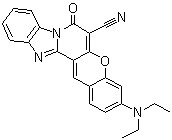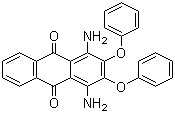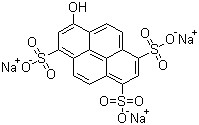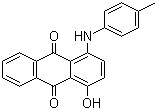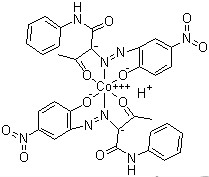Solvent Yellow 14 CAS 842-07-9
| Hazard Symbols | Xn – Harmful |
| Risk Codes | R40 – Limited evidence of a carcinogenic effect R43 – May cause sensitization by skin contact R53 – May cause long-term adverse effects in the aquatic environment R68 – Possible risk of irreversible effects |
| Safety Description | S22 – Do not breathe dust. S36/37 – Wear suitable protective clothing and gloves. S46 – If swallowed, seek medical advice immediately and show this container or label. S61 – Avoid release to the environment. Refer to special instructions / safety data sheets. |
| WGK Germany | 2 |
| RTECS | QL4900000 |
| HS Code | 32129000 |
| Toxicity | mmo-sat 300 ng/plate SCIEAS 236,933,87 |
Yellow 14 CAS 842-07-9 Information
quality
Benzo-2-naphthol, also known as Juanelli red (Janus Green B), is an organic dye. It is in the form of a green crystalline powder that is soluble in water, alcohol, and acidic media.
Benzoazo-2-naphthol has the following properties:
1. Dye properties: benzoazo-2-naphthol is an organic dye widely used in the dye industry. It can affinity with materials such as fibers, leather, and fabrics to give them a specific color.
2. pH responsiveness: Benzo-2-naphthol exhibits different colors at different pH values. In strongly acidic conditions, it has a reddish color; Under weakly acidic to neutral conditions, it is green; Under alkaline conditions, it is blue.
3. Biological activity: Benzo-2-naphthol has certain biological activity. It has been found to have antimicrobial effects on some bacteria and molds, and is widely used in cell staining in the fields of biology and medicine.
4. Redox: Benzo-2-naphthol is a strong reducing agent that can oxidize with oxygen under appropriate conditions. It can also be oxidized to azo compounds by oxidants.
In general, benzoazo-2-naphthol is an important organic compound due to its good dye properties and wide application fields.
Uses and synthesis methods
Benzo-2-naphthol is an organic fluorescent dye that has a wide range of applications in chemical and biological science research.
The synthesis method of benzoazo-2-naphthol is generally carried out by the following steps:
1. Aniline is reacted with nitrosohydroxylamine salts (produced under acidic conditions) at low temperatures to form azo compounds.
The resulting azo compound is then reacted with 2-naphthol under alkaline conditions to produce benzoazo-2-naphthol.
Benzoazo-2-naphthol has a variety of uses in practical applications, including:
1. Luminescent materials: Benzo-2-naphthol has good fluorescence properties and can be used to prepare luminescent materials, such as organic light-emitting diodes (OLEDs) and organic solar cells.
2. Display devices: Benzo-2-naphthol can be used in the preparation of organic thin-film transistors (OTFTs), which are display devices with high electron mobility and flexibility.
3. Biomarkers: The fluorescent properties of benzoazo-2-naphthol make it an ideal choice for biomarkers, which can be used in biological research such as cell imaging, molecular probes, etc.
Safety Information
Benzoazo-2-naphthol is an organic compound also known as PAN. Here’s an introduction to its safety information:
1. Toxicity: Benzo-2-naphthol has certain toxicity to the human body and may have irritating and damaging effects on the skin, eyes and respiratory system. Long-term exposure or heavy exposure can lead to chronic health problems.
2. Inhalation: The dust or vapor of benzoazo-2-naphthol can be absorbed by the respiratory tract, causing respiratory irritation, coughing, shortness of breath and other symptoms. Inhaling too much can cause lung damage.
4. Intake: Benzo-2-naphthol should not be ingested, which may cause gastrointestinal discomfort, vomiting, diarrhea and other symptoms. In case of accidental ingestion, seek medical attention immediately.
5. Environment: Benzo-2-naphthol has certain potential hazards to the environment, so it is necessary to pay attention to prevent it from entering water sources and soil, and comply with environmental protection regulations when using and disposing of it.
6. Storage and handling: Benzo-2-naphthol should be stored in a dry, cool, well-ventilated place, away from fire sources and flammable materials. Containers should be disposed of properly after use.



